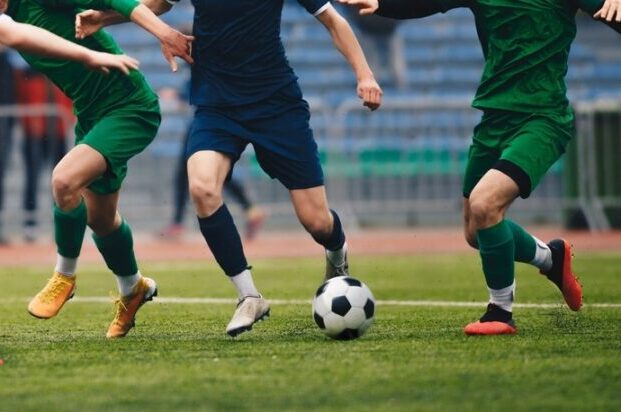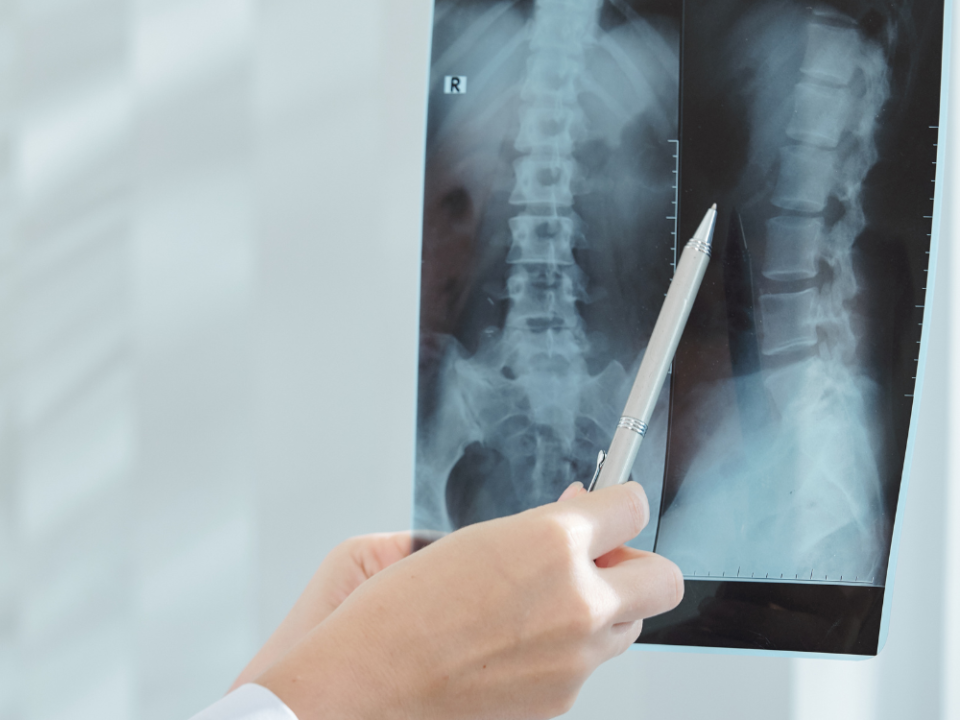
Balancing Act: How the Spinal Column Supports Our Upright Posture
September 14, 2023
Common Spinal Conditions: Causes, Symptoms, and Treatment Options
September 14, 2023In the world of sports, understanding spinal anatomy is crucial for athletes who want to prevent injuries and enhance their performance. The spine plays a vital role in supporting the body and facilitating movement, making it particularly susceptible to injuries in high-impact sports. By having a comprehensive understanding of the structure of the spine, the potential risks associated with sports, and the strategies to prevent injuries, athletes can stay on top of their game and protect their long-term health.
Understanding the Spinal Anatomy
The structure of the spine is composed of vertebrae, discs, and various supporting structures. The spine is divided into three main regions: the cervical (neck) region, the thoracic (mid-back) region, and the lumbar (lower back) region. Each region has its own unique characteristics and functions.
The cervical region consists of seven vertebrae and allows for rotational movements of the head. The thoracic region consists of twelve vertebrae and provides stability and protection for the organs within the chest. The lumbar region consists of five vertebrae and supports the majority of the body’s weight, making it more prone to injuries in sports.
Between each vertebra, there are intervertebral discs that act as shock absorbers and allow for flexibility. Ligaments, muscles, and tendons work in conjunction with the spine to facilitate movement and provide stability.
The Structure of the Spine
The spine is designed to provide support, protect the spinal cord, and allow for movement. It is made up of individual vertebrae stacked on top of each other, with intervertebral discs acting as cushions between them. The vertebrae are further supported by ligaments, muscles, and tendons.
The vertebrae are numbered from top to bottom, with the cervical region (C1-C7) at the top, followed by the thoracic region (T1-T12), and the lumbar region (L1-L5) at the bottom. Each vertebra has a central hole through which the spinal cord passes, connecting the brain to the rest of the body.
Between each vertebra, there is an intervertebral disc that consists of a tough outer layer called the annulus fibrosus and a gel-like inner core called the nucleus pulposus. These discs provide shock absorption and allow for spinal flexibility.
The spine is supported by ligaments that connect the vertebrae together and provide stability. Additionally, muscles and tendons surround the spine, providing strength and support for movement.
The Role of the Spine in Sports
When it comes to sports, the spine plays a crucial role in providing stability, transmitting forces, and allowing for efficient movement. A healthy and well-functioning spine is essential for optimal athletic performance.
During sports activities, the spine undergoes various movements, including bending, twisting, and extending. It acts as a stable base for the rest of the body, allowing for powerful movements while minimizing stress on other joints, such as the hips and knees.
In sports that involve jumping, running, or sudden changes in direction, such as basketball or soccer, the spine absorbs significant forces. Without proper conditioning and support, these forces can lead to injuries.
Additionally, in sports that require repetitive motions or maintaining specific positions for prolonged periods, such as swimming or gymnastics, the spine can be subjected to excessive stress and strain, increasing the risk of injuries.
Connect with Dr. Welchlin and his expert team at Center for Specialty Care to discuss personalized strategies for achieving peak athletic performance while safeguarding your spine.
Common Spinal Injuries in Sports
Despite the body’s natural resilience, sports-related spinal injuries are not uncommon. Athletes involved in high-impact sports are particularly susceptible to these injuries. Understanding the types of spinal injuries and the sports with a high risk of occurrence is essential for injury prevention and early intervention.
Types of Spinal Injuries
Spinal injuries can range from mild strains and sprains to more severe conditions such as herniated discs or fractures. Here are some common spinal injuries athletes may experience:
- Sprains and strains: These injuries involve overstretching or tearing of ligaments and muscles surrounding the spine. They can cause pain, inflammation, and reduced range of motion.
- Herniated discs: When the outer layer of an intervertebral disc tears, the inner core may protrude and impinge on nearby nerves, causing pain, numbness, or weakness in the affected area.
- Spinal fractures: Fractures can occur in the vertebrae due to direct trauma or excessive stress. These fractures can be stable or unstable and may require surgical intervention.
- Spinal cord injuries: Severe trauma to the spine can result in damage to the spinal cord, leading to partial or complete loss of sensation and movement below the injured area.
Sports with High Risk of Spinal Injuries
While spinal injuries can happen in any sport, some activities pose a higher risk due to their nature or intensity. Here are a few sports that athletes should be particularly cautious of:
- American football: The high-impact nature of the sport, combined with tackles and collisions, increases the risk of spinal injuries.
- Gymnastics: The repetitive and demanding movements in gymnastics can put excessive stress on the spine, making it susceptible to strains, sprains, and fractures.
- Snowboarding and skiing: Falls and collisions during these sports can lead to spinal injuries, especially when athletes land on their backs.
- Rugby: The physicality of rugby, including tackles and scrums, poses a risk of spinal injuries.
The Impact of Spinal Injuries on Performance
Spinal injuries can have both short-term and long-term effects on an athlete’s performance. It is crucial to recognize the immediate consequences and understand the potential long-lasting impact of these injuries.
Short-Term Effects of Spinal Injuries
Immediately following a spinal injury, an athlete may experience pain, restricted range of motion, and decreased strength. These factors can significantly impact an athlete’s ability to perform optimally, leading to decreased performance and potential time away from training and competition.
Depending on the severity of the injury, an athlete may require immediate medical attention or even surgery. These interventions can further disrupt training and lead to a prolonged recovery period.
Long-Term Consequences of Spinal Injuries
Even after a seemingly minor spinal injury, an athlete may experience long-term consequences that affect their athletic career and overall quality of life. Recurring pain, decreased flexibility, and limited mobility can hinder an athlete’s ability to perform at their best.
In some cases, spinal injuries may lead to chronic conditions such as degenerative disc disease or osteoarthritis. Athletes may also face psychological challenges, such as fear of reinjury or reduced confidence in their abilities.
Understanding the potential long-term consequences of spinal injuries reinforces the importance of prevention strategies and appropriate rehabilitation techniques to facilitate recovery and minimize the risk of reoccurrence.
Prevention Strategies for Spinal Injuries
Preventing spinal injuries should be a top priority for athletes and their coaches. Proactive measures can significantly reduce the risk of injuries and enhance an athlete’s long-term performance. Implementing proper training and conditioning techniques, along with the use of protective gear, play a crucial role in injury prevention.
Your spine plays a crucial role in your athletic journey. Trust Dr. Welchlin and the Center for Specialty Care team to provide you with expert guidance and personalized strategies. Contact us now to embark on a path to greater sports success and spinal health.
Proper Training and Conditioning
Effective training and conditioning programs are essential for strengthening the muscles supporting the spine and improving overall athleticism. Here are some key strategies to incorporate:
- Core strengthening exercises: A strong core provides stability and reduces the risk of excessive stress on the spine. Exercises such as planks, bridges, and medicine ball twists can help develop core strength.
- Flexibility training: Maintaining good flexibility in the spine and surrounding muscles is essential for preventing strains and sprains. Regular stretching exercises should be included in training routines.
- Proper technique: Athletes should be educated and consistently reminded of the importance of using correct techniques for their respective sports. Proper form and posture can significantly reduce the risk of spinal injuries.
Importance of Protective Gear
Protective gear is designed to minimize the impact of external forces and protect vulnerable areas, including the spine. Depending on the sport, athletes should consider the following protective equipment:
- Helmets: For sports such as American football, hockey, and cycling, helmets provide essential protection for the head and neck, reducing the risk of severe spinal injuries.
- Spinal braces and supports: In some sports, athletes may benefit from wearing specialized braces or supports that provide additional stability and help prevent excessive movements of the spine.
- Padded clothing: Athletes participating in high-contact sports, like rugby or martial arts, can benefit from wearing padded clothing to absorb impact and protect the spine from direct trauma.
Rehabilitation and Recovery from Spinal Injuries
Recovering from a spinal injury requires a comprehensive rehabilitation program tailored to the specific injury and the athlete’s individual needs. Rehabilitation techniques focus on reducing pain, restoring function, and progressively returning an athlete to their pre-injury performance level.
Physical Therapy Techniques
Physical therapy plays a crucial role in spinal injury rehabilitation. Therapists utilize various techniques to strengthen the muscles surrounding the spine, promote flexibility, and improve overall mobility.
Some common physical therapy techniques for spinal injury rehabilitation include:
- Manual therapy: Hands-on techniques such as joint mobilization and soft tissue massage help alleviate pain, increase range of motion, and promote healing.
- Therapeutic exercises: Specific exercises targeting the affected area as well as the entire body help restore strength, mobility, and stability.
- Electrotherapy: Modalities like ultrasound or electrical stimulation may be utilized to reduce pain, decrease inflammation, and enhance tissue healing.
Role of Diet and Nutrition in Recovery
A well-balanced diet and proper nutrition are integral to the recovery process for spinal injuries. Adequate intake of essential nutrients helps support tissue repair, reduce inflammation, and promote overall healing.
Here are some dietary considerations for athletes recovering from spinal injuries:
- Protein: Consuming sufficient protein is crucial for muscle repair and recovery. Lean sources of protein, such as chicken, fish, and legumes, should be included in meals and snacks.
- Antioxidants: Foods rich in antioxidants, such as fruits and vegetables, help reduce inflammation and support the body’s natural healing processes.
- Calcium and Vitamin D: These nutrients are essential for bone health and can aid in the healing of fractures. Dairy products, leafy greens, and sunlight exposure are good sources.
- Hydration: Staying hydrated promotes optimal cell function, tissue repair, and overall recovery. Athletes should aim to drink an adequate amount of fluids throughout the day.
By following proper rehabilitation protocols, adhering to a well-rounded training program, and implementing injury prevention strategies, athletes can not only recover from spinal injuries but also reduce the likelihood of future occurrences. Taking proactive steps towards spinal health is crucial for athletes looking to prevent injuries and enhance their performance on and off the field.




